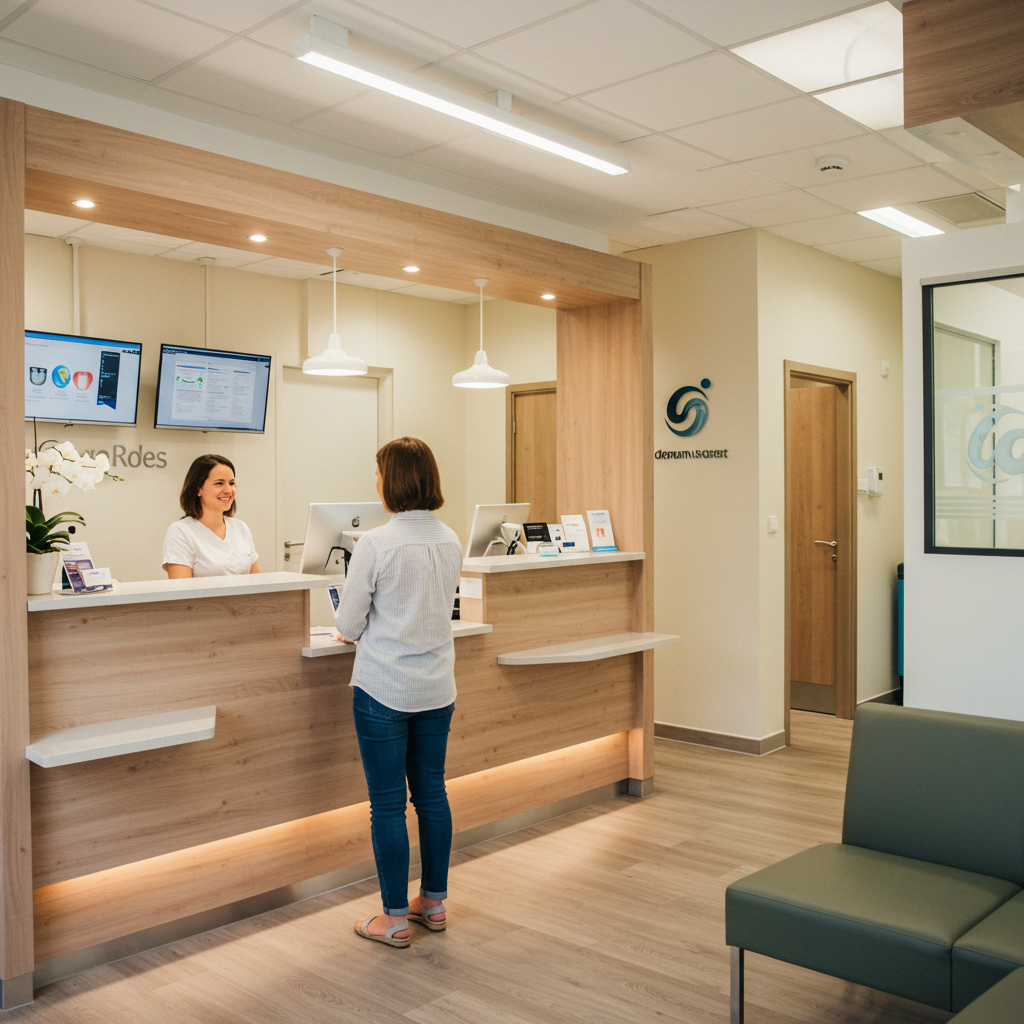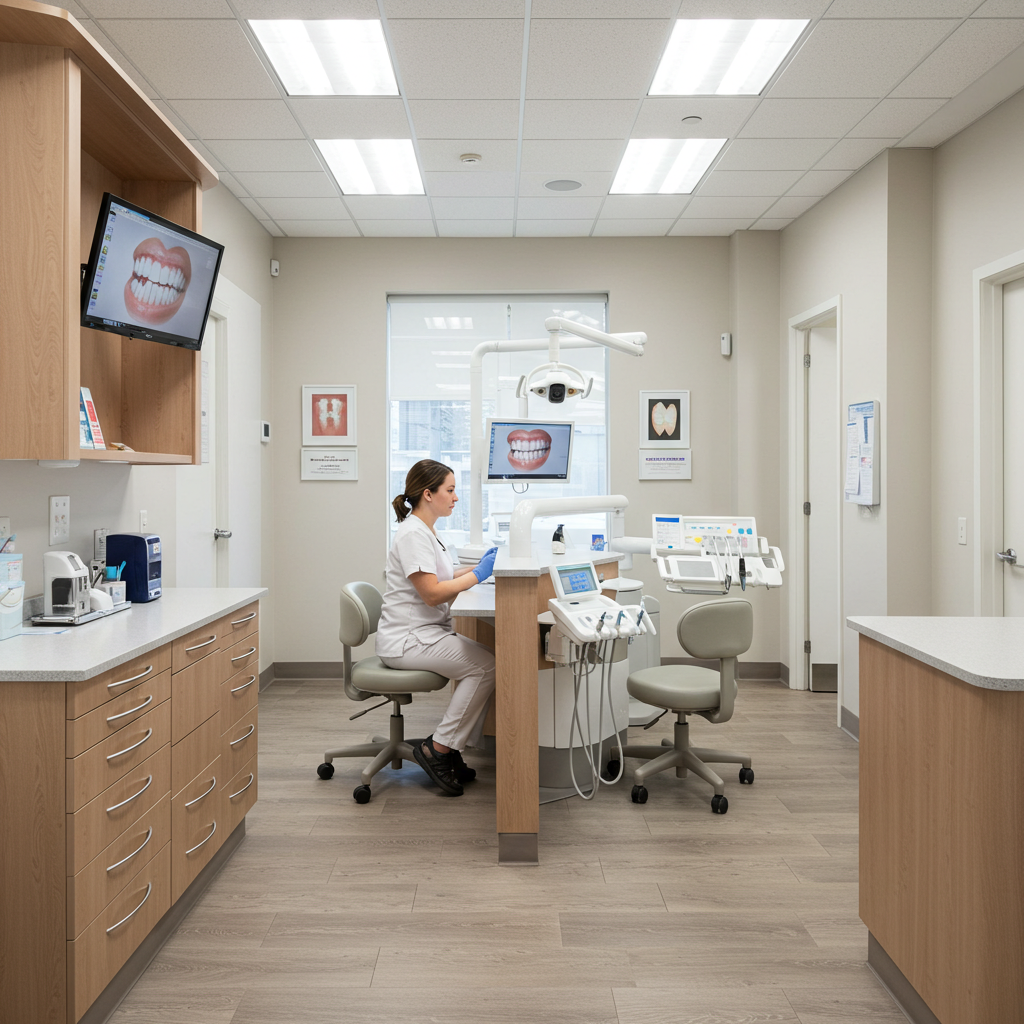Modern dental practices are leveraging technology to revolutionize patient care, transforming routine visits into personalized, comfortable experiences that enhance treatment outcomes and patient satisfaction.
Key Elements of Patient Experience
Creating a welcoming environment that appeals to all five senses sets the tone for a positive patient journey, encompassing the practice’s appearance, ambiance, and initial staff interactions. Personalized care is crucial, with dental staff trained to provide thoughtful, individualized attention that makes patients feel valued and understood. 12 Advanced technologies play a pivotal role in enhancing every aspect of the patient experience, from appointment booking to post-treatment follow-up, significantly improving accuracy, reducing procedure times, and increasing overall comfort. 34 By focusing on these key elements, dental practices can transform routine visits into cherished interactions, leading to higher patient retention, increased referrals, and an enhanced reputation in the competitive dental industry. 56

Modern Technology in Dentistry
Digital innovations have transformed modern dental practices, significantly elevating patient experiences. Intraoral cameras and chairside monitors provide real-time visuals of oral health, empowering patients to make informed decisions about their treatment 1. Virtual and augmented reality technologies offer immersive experiences, allowing patients to visualize treatment outcomes and understand procedures in 3D, which can reduce anxiety and promote treatment acceptance 2. Advanced tools like laser dentistry and CAD/CAM technology enable minimally invasive procedures and same-day restorations, reducing discomfort and eliminating the need for multiple visits 34. These technological advancements not only enhance clinical outcomes but also streamline administrative processes, improving overall practice efficiency and patient satisfaction.
Painless Dental Procedures

Modern dentistry has made significant strides in prioritizing patient comfort and minimizing pain during dental procedures. The following table highlights key advancements that have contributed to painless dental experiences:
| Technology/Technique | Benefit |
|---|---|
| Digital Impressions | Eliminates discomfort of traditional molds 1 |
| 3D Imaging | Improves accuracy and reduces procedure times 2 |
| Laser Dentistry | Enables minimally invasive treatments with less pain 3 |
| Virtual Reality | Helps overcome dental anxiety through immersion 4 |
| Local Anesthesia Advancements | Ensures more effective pain management 1 |
These innovations not only enhance patient comfort but also improve treatment outcomes. For instance, laser dentistry allows for precise tissue removal with minimal bleeding and faster healing times 5. Additionally, the use of virtual reality technology during procedures can significantly reduce patient anxiety, leading to a more relaxed and positive dental experience 4. By embracing these advanced techniques, dental practices can offer virtually pain-free treatments, transforming the perception of dental visits from a source of anxiety to a comfortable and efficient healthcare experience 1.
Emerging Trends in Patient-Centric Dental Technologies
Emerging trends in patient-centric dental technologies are revolutionizing the way dental care is delivered, focusing on enhancing patient comfort and treatment outcomes. Artificial Intelligence (AI) is at the forefront of this transformation, with AI-powered diagnostic tools improving the accuracy of cavity detection, periodontal disease identification, and even early signs of oral cancer1. These advanced systems not only aid in precise diagnoses but also contribute to personalized treatment planning, optimizing patient care.

3D printing technology is another game-changer, enabling the rapid production of custom dental prosthetics, orthodontic appliances, and surgical guides12. This innovation allows for same-day restorations, reducing the need for multiple appointments and improving patient convenience. Additionally, the integration of virtual and augmented reality tools in treatment planning helps patients visualize procedure outcomes, enhancing their understanding and acceptance of proposed treatments3. These patient-centric technologies, combined with cloud-based practice management systems and teledentistry options, are creating a more accessible, efficient, and personalized dental care experience43.
Continuous Improvement Strategies
Continuous improvement in dental practices involves implementing strategies that enhance patient experience and operational efficiency. The following table outlines key strategies for ongoing enhancement in modern dentistry:
| Strategy | Implementation |
|---|---|
| Patient Feedback Systems | Ongoing education on the latest technologies and patient care techniques 3 |
| Staff Training Programs | Ongoing education on latest technologies and patient care techniques 3 |
| Technology Integration | Adopting and updating digital tools for streamlined operations 45 |
| Data Analytics | Utilizing practice management software to analyze trends and improve services 6 |
| Personalized Care Plans | Tailoring treatment approaches based on individual patient needs and preferences 7 |

Implementing these strategies requires a commitment to ongoing evaluation and adaptation. For instance, patient feedback systems can provide valuable insights into areas needing improvement, allowing practices to address concerns promptly and enhance overall satisfaction2. Regular staff training ensures that the dental team stays updated on the latest technologies and patient care techniques, contributing to a more skilled and confident workforce 3.
Technology integration plays a crucial role in continuous improvement. Cloud-based practice management software, for example, can streamline administrative tasks, improve appointment scheduling, and enhance communication with patients6. Additionally, leveraging data analytics can help practices identify trends in patient behavior, treatment acceptance rates, and operational efficiency, enabling data-driven decision-making for service improvements 5.
Personalized care plans represent a shift towards patient-centered dentistry. By tailoring treatment approaches to individual needs and preferences, practices can significantly enhance patient satisfaction and treatment outcomes 7. This may involve offering flexible appointment times, customized treatment options, or utilizing patient education tools to improve understanding and treatment acceptance.
Continuous improvement also extends to the physical environment of the practice. Regularly updating the office design, incorporating comfort-enhancing features like TV glasses or form-fitting neck pillows, and ensuring a welcoming atmosphere can contribute to a more positive patient experience 8.
By consistently implementing and refining these strategies, dental practices can stay ahead of the curve, adapting to changing patient expectations and technological advancements. This proactive approach not only enhances the patient experience but also contributes to the long-term success and growth of the practice in an increasingly competitive healthcare landscape 9.

